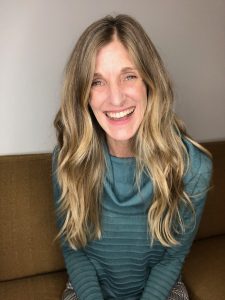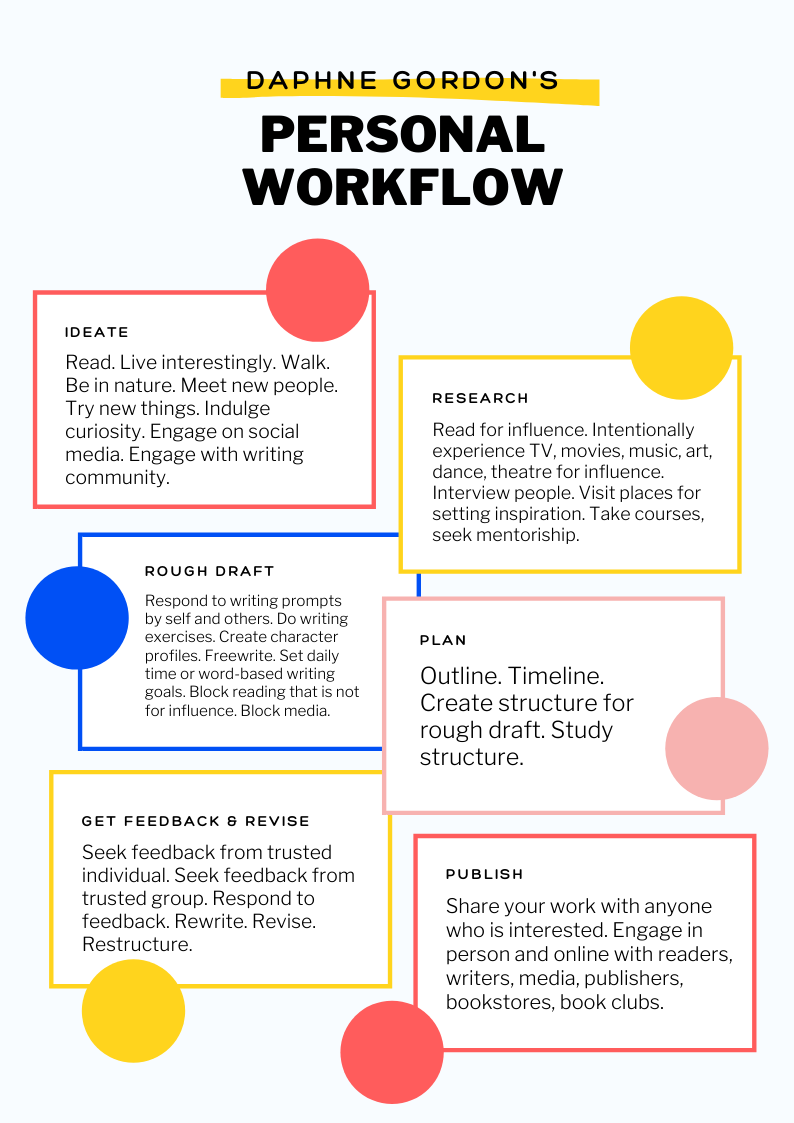How to keep your writing promises.

In the spotlight today, author Daphne Gordon teaches you a practical system to help you keep track of the promises you make to yourself.
She shares her own customized workflow — a promise-keeping map that holds you accountable, reassures you, and keeps you moving forward.
When you centre your commitment, you honour yourself.
I encourage you to make small promises at first. “Write a book” is a high bar! “Write 1000 words today” might feel better.
Some other promises you might make:
-
I promise to sit at my desk for ten minutes today (even if I don’t write anything).
-
I promise to look up short fiction contests online.
-
I promise to submit a story to a journal.
-
I promise to drop into the flow state in my writing today, even if only for a minute.
-
I promise to read a piece of my story out loud to an empty room.
-
I promise to sign up for a writing class (like the Story Course!)
-
Make yourself a promise that you will show up for your writing today.
Keep your promise.
Do this once a day, in some way, and watch what happens.
To learn how to design your own writing workflow, read what Daphne shares below.
Daphne Gordon is a TA in the Story Intensive this year. Enrollment is open right now! You may request to be in her class — I do my best to place students with their choices.
Warmly,

 Daphne Gordon (she/her) lives and writes in Toronto. She spent her early career as a journalist at a daily newspaper, but always longed to write fiction. She finally got the chance during maternity leave from her job. After studying at Sarah's kitchen table, she went on to teach the Story Intensive and the Story Workshop. Daphne’s self-published novella, Walking With Walser, tells a tragicomic story of a middle-aged flanêuse on an all-day walk on Queen Street in Toronto.
Daphne Gordon (she/her) lives and writes in Toronto. She spent her early career as a journalist at a daily newspaper, but always longed to write fiction. She finally got the chance during maternity leave from her job. After studying at Sarah's kitchen table, she went on to teach the Story Intensive and the Story Workshop. Daphne’s self-published novella, Walking With Walser, tells a tragicomic story of a middle-aged flanêuse on an all-day walk on Queen Street in Toronto.
I love talking about writing, so I’ve been taking writing courses since the day I could hold a pencil. All the courses I took were valuable, but when I found the Sarah Selecky Writing School, I discovered a key component of writing courses: enjoyment. Sarah and her school showed me it’s necessary to enjoy writing and be kind to myself. Angst and self-doubt are an unnecessary detour on the way to writing a novel.
As a teacher, I try to convey that key principle of enjoyment to my writers. By demystifying craft and paying attention to process, we can eventually become masters of our chosen domain. But the real challenge is to embrace what we have to say today and the skills we have in the present moment. In my classes, a writer’s worth comes not from technical mastery or poetic genius. It’s a matter of showing up as we really are. There’s real enjoyment in that!
Walking Forward and Looping Back
Sure about starts but icky about endings? Concerned you might die before you write a whole short story, let alone a novel? If this sounds like you, you might consider looking at the concept of workflow to create a plan that will help you move forward.
Don’t know what a workflow is? I suggest you Google it and talk to writers you know about this concept. Because it’s important if you really want to complete something.
An infographic that shows my workflow visually is below. Use it as inspiration to create your own.
Consider your own workflow. Visualize in your mind the various steps you take when you write, and try to write them in a sequence that makes sense. Do it in a rough way, and consider your document a work in progress. First map out the parts of the process you do most. Then, in places where you might not have experience — self editing, for example, or outlining — map out your ideal workflow, the workflow you aim to develop.
Use a huge piece of paper, pencil crayons, crayons, paint. Then, post your personalized workflow in your space. Always keep walking forward, looping back, and walking forward again. When the workflow on your wall no longer matches the way you see and experience your workflow, remake it. Repost it. And keep walking forward and looping back and walking forward until you have completed a project.
Sure you love to write. That’s why you’re here. But loving to write and needing to publish are two different things. And if you really want to publish — a desire you should examine constantly and thoroughly to see if it’s still true — you must spend time in the later part of the workflow. You must put your butt in the chair to do the tough, time-consuming, on-screen stuff: rewriting, editing, proofing, submitting, and generally preparing your self and your work for an audience’s eyes.
To get more comfortable at the publication end of the workflow, try taking a course in fiction editing, submit a story to a publication or contest, or make a commitment with a writing partner to set a deadline for a completed rough draft.
These methods have all worked for me at various times in my life. You should ask yourself what strategy would work for you right now — at this particular point of your life, to help you move one more step forward on your workflow.
A healthy workflow has lots of looping back, and sometimes the looping will lead you to abandon a manuscript and go all the way back to reading, living and thinking before starting fresh with a new project. Do not despair. It’s just a looping back. It’s not a failure or a waste of time. Just start again from wherever you are. Just keep marching forward.
I have found that moving forward on my workflow — even if it’s happening in slow, incremental steps — is enough to keep my hungry ghosts quiet.
Just keep moving forward. Eventually you will get there. You will find completion. You will know who you are.

Photo credit (top): Helena Lopes on Pexels

0 comments
Leave a comment